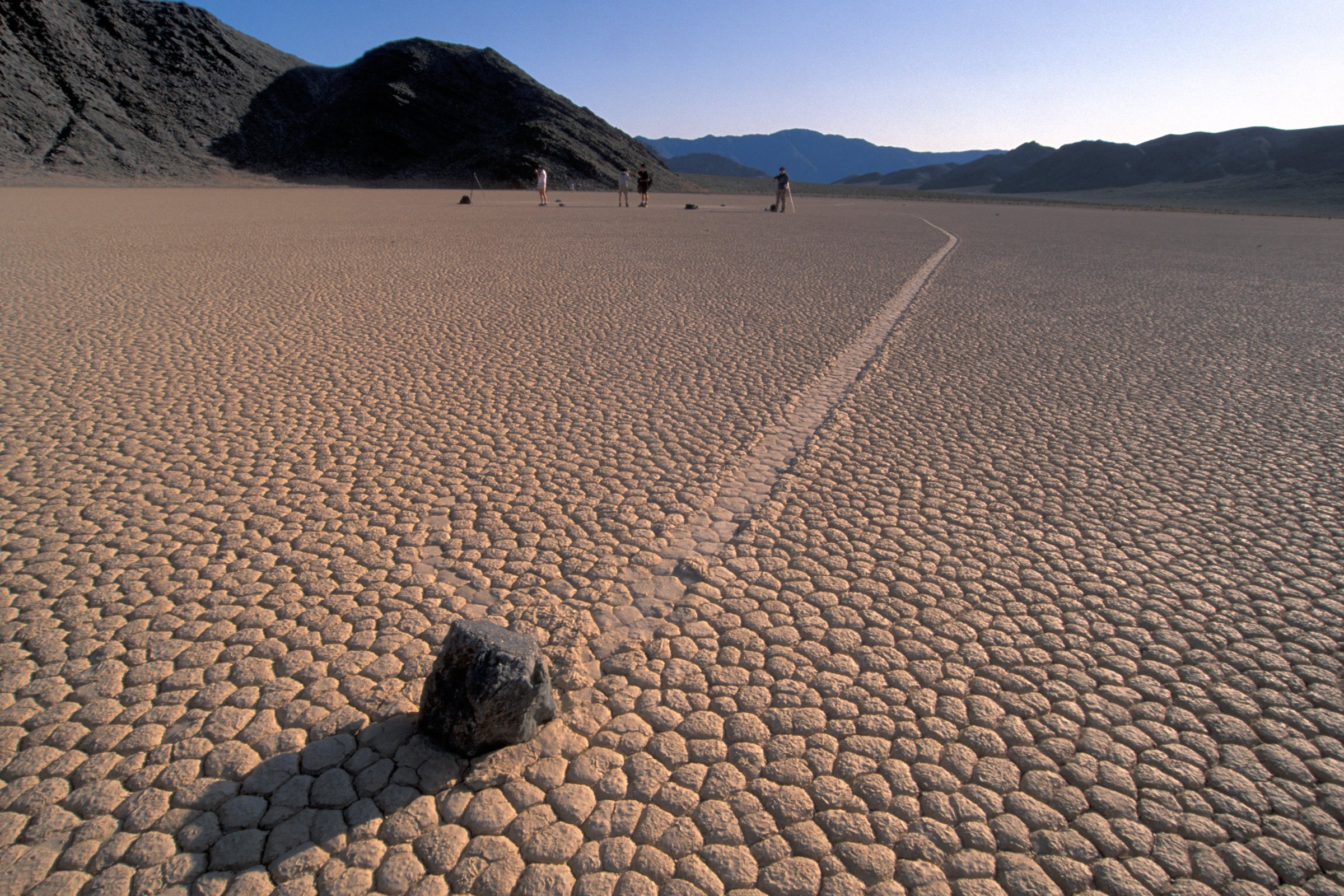
So-called sailing stones in California’s Death Valley National Park have perplexed tourists and scientists alike for their apparent ability to move on their own, leaving sometimes meter-long tracks in their wake.
But after years of speculation, researchers with patience, remote weather monitors, cameras, and stones that are fitted with GPS say they have discovered the force behind the phenomenon.
Wind (very strong winds) and ice (very thick ice) have long been considered as possible explanations for why the rocks, sometimes weighing hundreds of pounds, move. It’s actually a combination of a little of both, the team of researchers say in their study, published in the journal PLOS One this week.
Rainwater in what is known as the Racetrack Playa creates a shallow pond over the playa that, in cold winter temperatures, freezes over. When the ice begins to melt under the sun, it first breaks up into large panels thin enough that, with a nudge from even light winds, they shift — and push whatever rocks may lie in their path.
More Must-Reads from TIME
- Inside Elon Musk’s War on Washington
- Meet the 2025 Women of the Year
- Why Do More Young Adults Have Cancer?
- Colman Domingo Leads With Radical Love
- 11 New Books to Read in Februar
- How to Get Better at Doing Things Alone
- Cecily Strong on Goober the Clown
- Column: The Rise of America’s Broligarchy
Write to Noah Rayman at noah.rayman@time.com